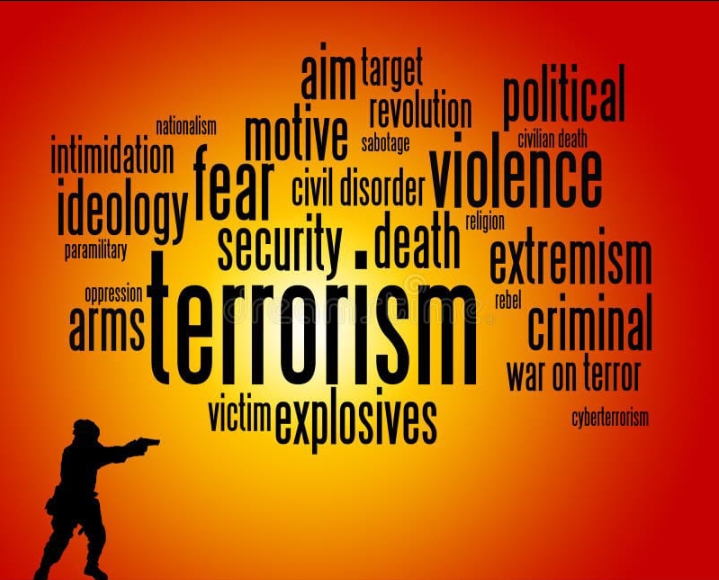Terrorism: A Brain Disorder and Social Disease in the 21st Century.
Understanding Its Forms, Causes, Diagnosis, and Cure – A Global Perspective
1. Definition of Terrorism as a Disorder
Terrorism is not merely an act of violence—it is a neurological, psychological, and social disease driven by ideological infection, radical conditioning, and brainwashing. Much like a viral pandemic, it spreads from mind to mind, community to community, crossing borders without warning.
> Working Definition:
"Terrorism is a pathological behaviour pattern, induced through radical ideology, mental manipulation, and social engineering, which leads individuals or groups to execute or support acts of violence, genocide, financial and psychological warfare, and destabilization, often under the illusion of righteousness."
---
2. Forms and Manifestations of Terrorism
Terrorism manifests in diverse and hybrid forms affecting not just individuals but entire civilisations:
A. Ideological & Mental Forms
Radicalisation via social media, religious extremism, political indoctrination.
Mental health degradation: paranoia, psychosis, depersonalization.
Cult behaviour leading to "righteous killing".
B. Physical & Social Forms
Genocide & ethnic cleansing (e.g., Rwanda, Nazi Germany).
Contract killing, cross-border terrorism, lone-wolf attacks.
Trap recruitment: targeting youth, minorities, or vulnerable minds.
Corruption as a psychological enabler of terror funding and social decay.
C. Financial & Economic Terrorism
Funding networks via phishing, looting, cyber attacks.
Economic warfare (e.g., currency destabilization, targeting supply chains).
Ransom economies driven by fear and abductions.
D. Environmental & Digital Forms
Digital radicalisation and AI-based hate propaganda.
Cyber terrorism, emotional manipulation, and disinformation warfare.
Bio-terrorism as a new age threat (e.g., lab leaks, virus weaponisation).
---
3. Black, Gray, and Red Lists: Terror Diagnosis by Intention and Impact
Category Definition Example Intent Level
Black List Confirmed active terrorists/groups involved in organized violence ISIS, Al-Qaeda, Lashkar-e-Taiba Fully Radicalized
Red List High-risk individuals or cells under observation for planning or funding terrorism Lone wolf attackers, funders Pre-execution phase
Gray List Sympathizers, passive supporters, ideological influencers Radical preachers, hate influencers Ideological Infection
> Terrorist Diagnosis (Intent-Based):
1. Ideological Terrorist – Believes in supremacy/faith-based justification for killing.
2. Contractual/Financial Terrorist – Kills for economic gain or mercenary motive.
3. Political Terrorist – Disturbs peace for power shifts or regime change.
4. Cyber Terrorist – Digitally manipulates, destroys systems or minds.
5. Global/Continental/Cross-Border Terrorist – Uses transnational networks to execute large-scale disruption.
---
4. Symptoms of a Terrorist Mind
Loss of empathy for opposing ideology.
Glorification of martyrdom or violence.
Repetitive exposure to radical content.
Desire for control through fear.
Behavioral isolation from civil norms.
Justification of violence as duty or faith.
---
5. Terrorism as a Contagion: A Pandemic of the Mind
Terrorism spreads through:
Digital viruses of ideology (YouTube videos, forums, AI bots).
Emotional propaganda.
Groupthink infection (via WhatsApp groups, underground preaching).
Isolation psychology – Targeting people who feel ignored or rejected.
It is self-replicating, mutation-capable, and hard to detect in early stages, like a neurological pandemic.
---
6. Precautions & Mitigation Strategies
A. Psychological Immunization
Early education on critical thinking.
Community-based deradicalisation programs.
Therapy and mental health clinics in conflict zones.
B. Digital Surveillance & Firewalls
Global AI-based monitoring of hate speech and radical keywords.
Banning radical influencers/platforms.
Tracing funding and transactions.
C. Cultural Engagement
Promote local art, faith dialogues, and peaceful narratives.
Social media positive content campaigns.
Inter-faith and inter-country youth summits.
---
7. Diagnosis of Enemy Behaviour: A Global Intelligence Model
> Universal Behavioural Patterns of Terror-Linked Individuals:
Paranoia about a ‘global conspiracy’.
Use of coded language, hidden threats.
Sudden isolation and shift in ideology.
Unusual foreign communication or travel.
Behavioral AI should flag these signals early for mental health or legal intervention.
---
8. Cure and De-Radicalisation Models
Cognitive Therapy with religious reinterpretation.
VR-based simulations showing consequence of violence.
Rehabilitation camps (with job training + spiritual detox).
Family/community counselling for ex-terror affiliates.
> De-radicalisation is possible — but only with mental health support, social reintegration, and surveillance.
---
9. Toward a Universal Anti-Terror Doctrine
One World List: Shared data of Black/Red/Gray across nations.
Terrorism = Brain Disorder — to be studied like PTSD or Schizophrenia.
Peace AI to detect, flag, intervene in radical patterns online.
Global Anti-Terror Vaccination Model – Mental, digital, cultural inoculation for youth.
---
10. Conclusion
Terrorism is no longer just a geopolitical issue — it is a neurological, social, economic, and digital disease. To fight it, the world must treat it like an endless pandemic—with global unity, preventive mental health care, early detection, and deep cultural healing.
The new era demands not just armies and weapons, but psychologists, educators, data scientists, and moral leaders to win this invisible war.
---
Prepared By:
Chandan Sharma
B.Pharm, PGDPSM
Pharma-Political & Behavioural Science Researcher
“Radical peace begins with mental immunity.”
